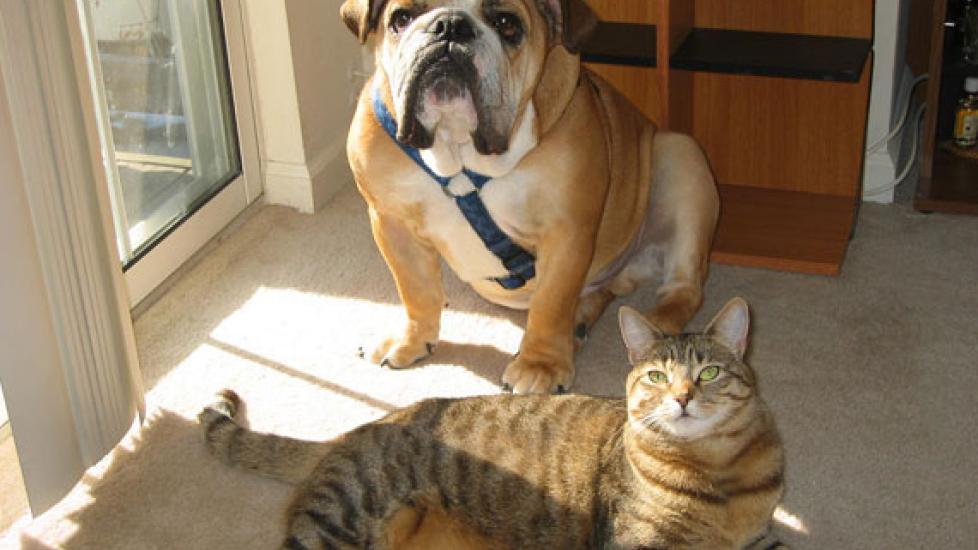What You Need to Know About Thyroid Disease in Dogs and Cats
If you’ve been around pets long enough, chances are you’ve known a hypothyroid dog or a hyperthyroid cat. Thyroid gland dysfunction is so common in dogs and cats that I thought a primer was in order.
Where is the Thyroid Gland?
The thyroid gland has two distinct segments, one on each side of the trachea (windpipe) just below the larynx (voice box). In contrast, people have one continuous gland in the shape of a butterfly. In many individuals, some additional small areas of thyroid tissue can be located anywhere from the larynx down to the diaphragm. This “ectopic” tissue can maintain thyroid function after the main gland is surgically removed (e.g., due to cancer).
What Does the Thyroid Gland Do?
The thyroid gland makes several different hormones — mostly thyroxine (T4) but also 3,5,3’-triiodo-thyronine (T3), reverse T3, and a few others. These thyroid hormones have effects throughout the body, for example:
- regulation of body temperature
- metabolism of fats and carbohydrates
- weight gain and loss
- heart rate and cardiac output
- nervous system function
- growth and brain development in young animals
- reproduction
- muscle tone
- skin condition
What are Thyroid Hormone Levels Influenced By?
Many medications can transiently depress (or rarely, elevate) thyroid hormone levels. Blood tests must be carefully evaluated with accurate knowledge of drug therapy. Only one drug is known to have the potential to cause clinical hypothyroidism — trimethoprim-sulfamethoxazole (a sulfa antibiotic medication).
Iodine deficiency can lead to hypothyroidism, although this is rarely clinically significant since commercially prepared dog and cat foods have adequate iodine levels. Goitrogens are substances that interfere with normal thyroid hormone synthesis. Examples include cabbage, broccoli, kale, and rape. Soybean protein in cattle feed is another example, but again dietary issues are rarely a concern for dogs and cats.
Photoperiod (amount of daylight) may be important to thyroid function, but studies are ongoing. Finally, cold temperatures upregulate the thyroid gland leading to increased production of T4 and body heat.
Disease States in Dogs and Cats
Hypothyroidism usually occurs in middle-aged, medium to large breed dogs (rarely in cats). It is usually caused by inflammation or idiopathic atrophy (deterioration of unknown cause) of the thyroid gland and results in decreased production of thyroid hormones. The consequences are multi-factorial due to the many effects of the hormone, but symptoms typically include a low energy level, weight gain, a tendency to seek out warm places in the home, a poor quality coat, and recurrent skin and ear problems. Treatment consists of replacement thyroid hormone given orally.
Hyperthyroidism occurs much more often in cats. Feline hyperthyroidism is almost always due to a benign tumor in the thyroid gland. The tumor stimulates the gland to produce too much hormone and causes an upregulation in metabolism, with resulting weight loss despite a good or even ravenous appetite, increased energy levels, and possibly heart disease. The gold standard therapy is radioactive iodine (I131) treatment, which is curative in most cases. Medication (methimazole) or dietary therapy using a food with a reduced iodine content are good options when I131 therapy is not appropriate due to financial considerations or the cat’s overall health.

Dr. Jennifer Coates
Image: sabianmaggy / Flickr
